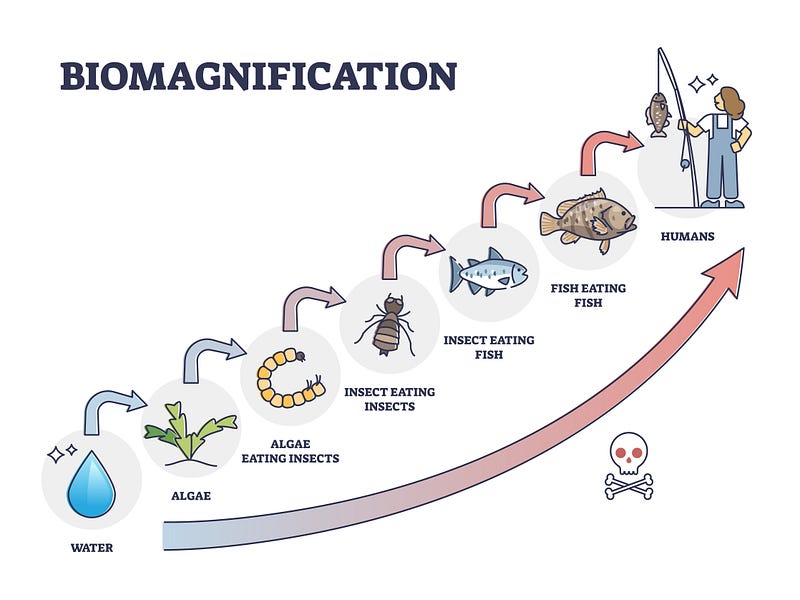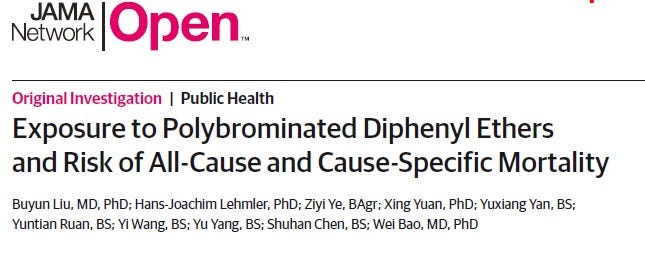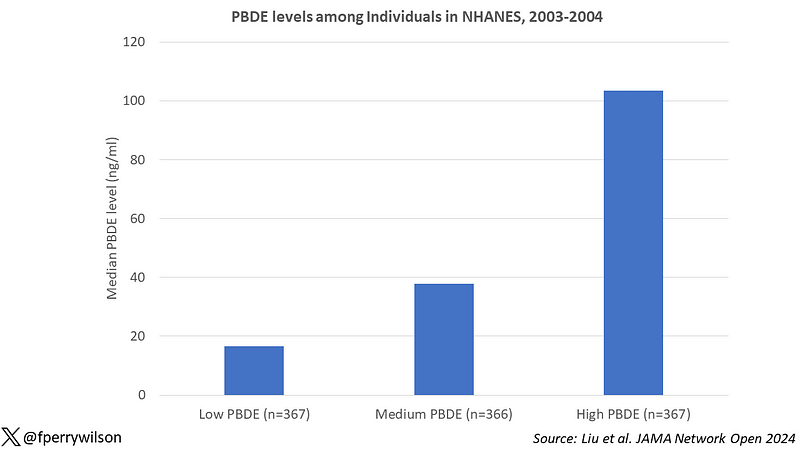A Banned Carcinogen Continues to Persist in Our Food Supply
Written on
Understanding PBDEs and Their Impact
Today, we’re diving into a chemical that may pose cancer risks, one you might not be familiar with. Typically, discussions around harmful substances end with a call for their regulation; however, in this case, that action has already been taken. The chemical in question is a group of compounds known as polybrominated diphenyl ethers, or PBDEs, which have not been manufactured or legally imported into the U.S. since 2013. So why is this still relevant?
PBDEs are still present in our environment—found in soil, food, and even in our own bodies. These compounds were widely used for their flame-retardant properties in plastics, especially during the latter part of the 20th century in various products, including electronics and upholstery.
A significant issue with PBDEs is that they do not chemically bond with plastics; instead, they are simply mixed in, allowing them to leach out into the environment. They are hydrophobic, meaning they resist washing away, and when humans ingest or inhale them, they tend to accumulate in fat tissues, making it hard for our bodies to eliminate them.
Biomagnification of PBDEs occurs as smaller animals absorb these chemicals from contaminated environments, which are then consumed by larger predators, leading to higher concentrations in those higher up in the food chain—like humans.

This scenario applies to numerous toxic chemicals. The concern arises particularly when these substances are harmful. Although previous studies have indicated that high doses of PBDEs can lead to liver lesions in rats, extrapolating these results to humans is challenging. There are also indications that these compounds may act as endocrine disruptors, potentially impacting breast and thyroid tissues.
As for cancer risks, the International Agency for Research on Cancer (IARC) stated in 2016 that there was "inadequate evidence in humans for the carcinogenicity" of PBDEs. However, they also suggested that PBDEs are "probably carcinogenic to humans" based on mechanistic studies.

In essence, while definitive proof of their cancer-causing effects is lacking, there is a strong implication that they likely are harmful.
Recent research published in JAMA Network Open provides further evidence supporting the carcinogenic potential of PBDEs. This study utilized data from the National Health and Nutrition Examination Survey (NHANES) to analyze PBDE levels in blood samples from over 1,100 participants taken during 2003 and 2004, linking these findings to mortality records over the subsequent 20 years.

Notably, researchers confirmed the presence of PBDEs in the blood samples, which varied significantly among participants. Dividing individuals into tertiles based on their PBDE levels revealed nearly a ten-fold difference across the group.

Interestingly, there were few baseline characteristics that correlated with PBDE levels, indicating a certain randomness in exposure. This is typical for environmental toxins that travel through the food chain.
After controlling for initial factors, individuals with the highest PBDE levels had a 43% increased mortality rate from all causes during the study period. While this did not achieve statistical significance, it was close. More importantly, cancer deaths were four times more frequent in the high PBDE group, and this difference was statistically significant.

While cancer deaths were infrequent within this cohort, the results strongly suggest a link between PBDEs and carcinogenicity. It's worth noting that the researchers assessed PBDE levels at a single time point, which may not fully capture long-term exposure variability due to dietary changes.
Further research is needed to identify specific cancer types associated with PBDE exposure, as current data does not provide enough detail. However, the similarity in cancer rates between genders suggests that the risk may not be heavily influenced by sex-specific factors.
Despite the ban on PBDEs in the U.S., these findings raise questions about our ongoing exposure to these harmful chemicals. Most of our current exposure appears to stem from our diet, particularly from high-fat foods such as fish, meat, dairy products, and fish oil supplements. Investigating the contamination levels of these food items is crucial.
This video titled "A Banned Carcinogen Is Still in Our Food Chain" explores the persistent presence of PBDEs in our environment and food supply, highlighting the potential risks associated with these chemicals.
In this video, "I Drank a Known Carcinogen... For Science," the host takes a closer look at the implications of PBDE exposure and what it means for public health.
In summary, while PBDEs may no longer be produced in the U.S., their lingering presence in our environment warrants serious attention and further research into their potential health risks.